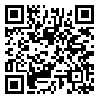Volume 6, Issue 3 (8-2019)
JROS 2019, 6(3): 7-12 |
Back to browse issues page
Download citation:
BibTeX | RIS | EndNote | Medlars | ProCite | Reference Manager | RefWorks
Send citation to:



BibTeX | RIS | EndNote | Medlars | ProCite | Reference Manager | RefWorks
Send citation to:
Shariatzadeh H, Najd Mazhar F, Dehghani Nazhvani H, Eghbali Jelodar H. Comparison of Computed Tomography Scan and Plain Radiograph for the Assessment of Postoperative Union in Patients Treated for Scaphoid Nonunion. JROS 2019; 6 (3) :7-12
URL: http://jros.iums.ac.ir/article-1-2069-en.html
URL: http://jros.iums.ac.ir/article-1-2069-en.html
1- Bone and Joint Reconstruction Research Center, Shafa Orthopedic Hospital, Iran University of Medical Sciences, Tehran, Iran.
Abstract: (1744 Views)
Background: The appropriate monitoring of union following the treatment of scaphoid nonunion is essential. However, there is no consensus regarding the optimal imaging modality for this evaluation.
Objectives: Here, we compared the reliability of plain radiographs with computed tomography (CT) scanning in determining the union of scaphoid following the scaphoid nonunion.
Methods: In this retrospective study, 25 patients, who underwent the surgical treatment of scaphoid nonunion and had both plain radiographs and CT images, were included. The surgical procedure included open reduction, illiac crest bone graft, and K-wire fixation. Two different observers assessed the healing of scaphoid nonunion by both imaging modalities and graded as healed or non-healed.
Results: The mean±SD age of the patients was 29.1±6.8 years. The mean±SD time interval from the operation to imaging was 6.5±2.5 months. Based on the plain radiographs, all patients achieved the scaphoid union. However, in the CT evaluation, 23(92%) patients showed the scaphoid union. Accordingly, CT images and plain radiographs agreed in 23 cases and disagreed in two cases. This difference was not statistically significant (P=0.5).
Conclusion: In a subset of patients, who underwent the operation for the treatment of scaphoid nonunion, plain radiographs might falsely confirm a scaphoid union. In these patients, a complementary CT evaluation might be helpful in the accurate assessment of scaphoid healing.
Objectives: Here, we compared the reliability of plain radiographs with computed tomography (CT) scanning in determining the union of scaphoid following the scaphoid nonunion.
Methods: In this retrospective study, 25 patients, who underwent the surgical treatment of scaphoid nonunion and had both plain radiographs and CT images, were included. The surgical procedure included open reduction, illiac crest bone graft, and K-wire fixation. Two different observers assessed the healing of scaphoid nonunion by both imaging modalities and graded as healed or non-healed.
Results: The mean±SD age of the patients was 29.1±6.8 years. The mean±SD time interval from the operation to imaging was 6.5±2.5 months. Based on the plain radiographs, all patients achieved the scaphoid union. However, in the CT evaluation, 23(92%) patients showed the scaphoid union. Accordingly, CT images and plain radiographs agreed in 23 cases and disagreed in two cases. This difference was not statistically significant (P=0.5).
Conclusion: In a subset of patients, who underwent the operation for the treatment of scaphoid nonunion, plain radiographs might falsely confirm a scaphoid union. In these patients, a complementary CT evaluation might be helpful in the accurate assessment of scaphoid healing.
Received: 2019/05/16 | Accepted: 2019/07/13 | Published: 2019/08/1
| Rights and permissions | |
 |
This work is licensed under a Creative Commons Attribution-NonCommercial 4.0 International License. |









